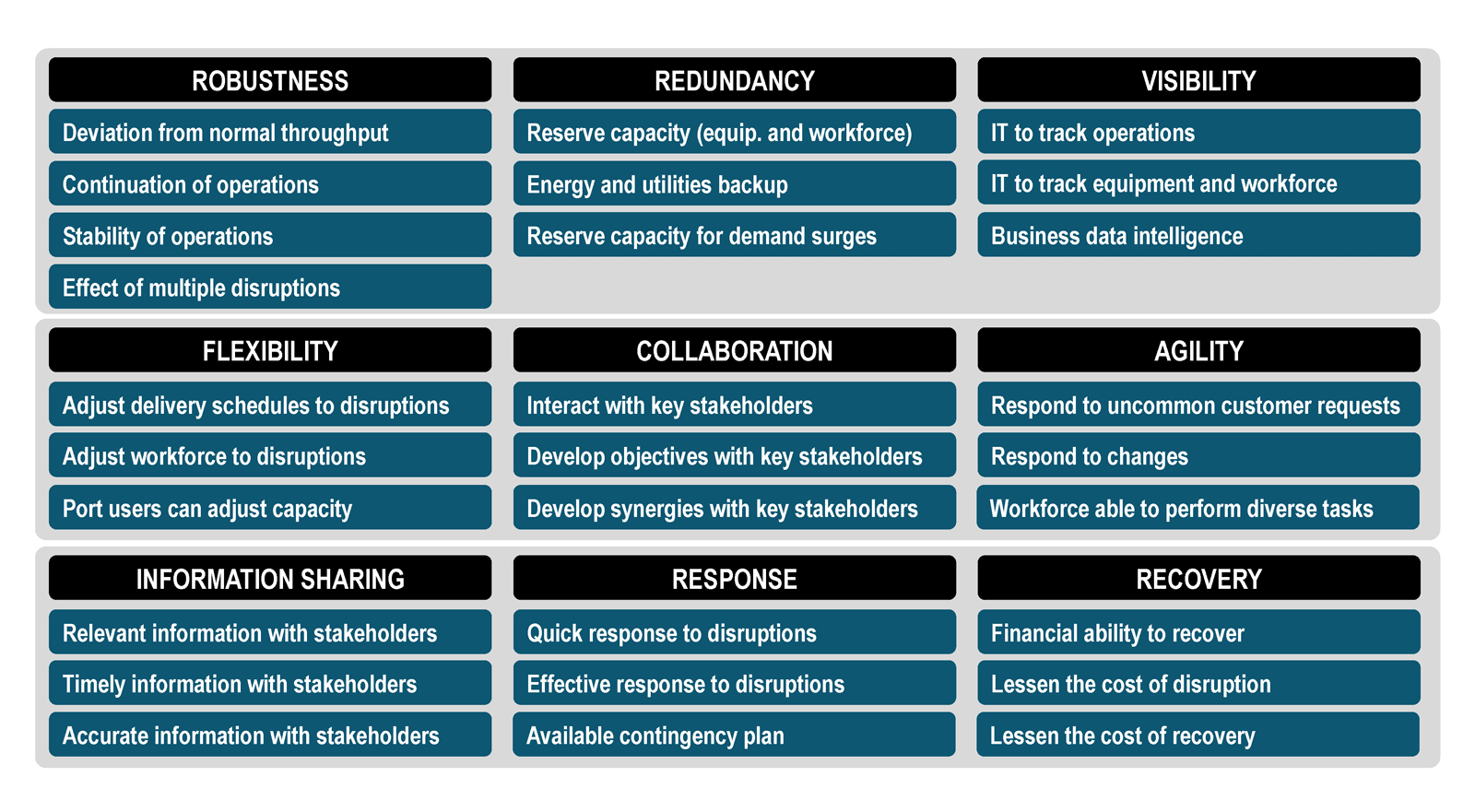Existing indicators used to assess port performances, whether financial, economic, social or environmental sustainability, can be relied upon to infer preparedness to withstand disruptions and keep port activity flowing during and after events. While keeping track of resilience performance through indicators and data is important for resilience-building is important, a common challenge associated with assessing, monitoring, and tracking port resilience and its performance relates to the variables/aspects and indicators (metrics) that need to be developed, quantified and compiled (figure 24).
Figure 24: Resilience-related variable and metrics

Source: Adapted from Kim, S., S. Choi and C. Kim (2021).
Variables that could serve as metrics can be grouped by resilience categories:
- Robustness. The expectation is that port performance should not deviate significantly from a standard representing an expected throughput and should be able to carry out a continuity of operations when faced with a disruption. Robustness can also be measured by the stability of operations and a port’s ability to handle multiple possible disruptions.
- Redundancy. A port can maintain a reserve capacity of equipment and workforce that can be brought in case of a disruption. This also involves backup energy and utility supplies to maintain operations if regular supplies are compromised. The port can also have reserve capacity to handle unexpected demand surges.
- Visibility. The port has an information system that accurately tracks its operations, can track equipment and workforce in real-time, and has an effective business intelligence programme for data analysis and horizon scanning.
- Flexibility. The port can adjust its delivery schedules to mitigate disruptions, particularly its yard and gate operations. This may also require adjusting workforce capacity in response to disturbances. On both the maritime (e.g. shipping lines) and hinterland sides (e.g. truck, rail, cargo owners), port users must be able to adjust capacity to mitigate disruptions.
- Collaboration. A port can interact with key stakeholders to mitigate disruptions. This implies the development of strategic objectives that can be addressed jointly and finding issues where stakeholders could obtain mutual benefits and create synergies.
- Agility. A port can respond to unusual requests by partners, including specialized and project cargo. Port operations can react to changes, such as new regulations, market and demand changes, and new technologies. A port’s workforce can handle various tasks and switch tasks according to the demand.
- Information sharing. A port can exchange relevant information with stakeholders in a timely manner, and ensure that this information is accurate.
- Response. A port can quickly respond to disruptions as it can do so. These responses are also effective. The availability of contingency plans allows resources to be put forward to respond to a disruption.
- Recovery. A port has the financial capacity to absorb significant losses through existing reserves and financial support from third parties, such as banks and public funds. A port should have the resources to lower the cost of disruption and recovery.
